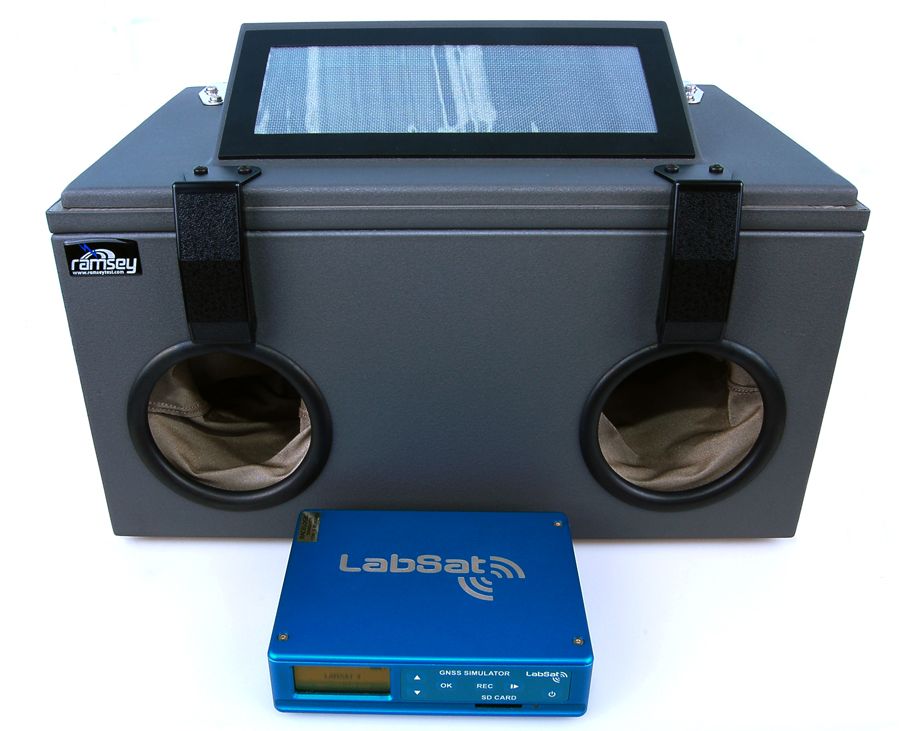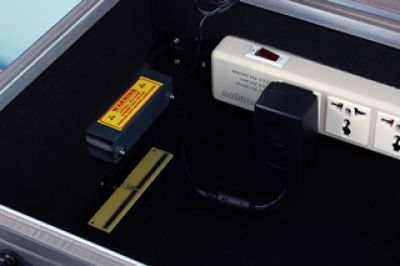LabSat Test Enclosure
The LabSat Test Enclosure allows for secure screened testing away from any live RF signals, ideal when working with devices that do not have an external antenna connector - such as wearables, smartphones, and sports/fitness trackers.
When testing a product which only has an internal antenna, simulator rebroadcast must be separated from live GNSS signals; however, their retransmission in an open environment is generally severely restricted and comes with inherent issues:
- The test is subject to interference from other RF sources (including real GNSS signals)
- In many countries, radiation of GNSS signals is not legal.
- Radiation may interfere with other equipment and systems.
- There is little control for consistent results
- Tests may be subject to considerable multipath from nearby reflective surfaces
A fully screened RF room is very expensive to install and use, so the portable enclosure offers a convenient, controlled, and affordable test solution.

The LabSat Test enclosure is constructed of 0.090 aluminium, with exactly machined tolerances throughtout to maintain an RF-tight environment.
Signal isolation is ensured through 'double lip' sealing, heavy-duty hinge covers that open precisely with use of an air piston, and an RF absorbent foam lining with 24 dB attenuation. Access to the equipment inside – which can be clearly observed through the large viewing window – is via ultra-fine mesh gloves that provide high manual dexterity.
A pair of low voltage lamps, powered by the RF filtered AC supply, illuminate the interior, and a precision machined I/O panel contains RF SMA and USB connections.
To allow for accurate and consistent testing a GNSS average length dipole antenna and an application note detailing correct test procedures, together with an 8 GB SD memory card containing a SatGen V3 GPS artificial scenario to allow for GPS testing down to -150 dB, are included.
